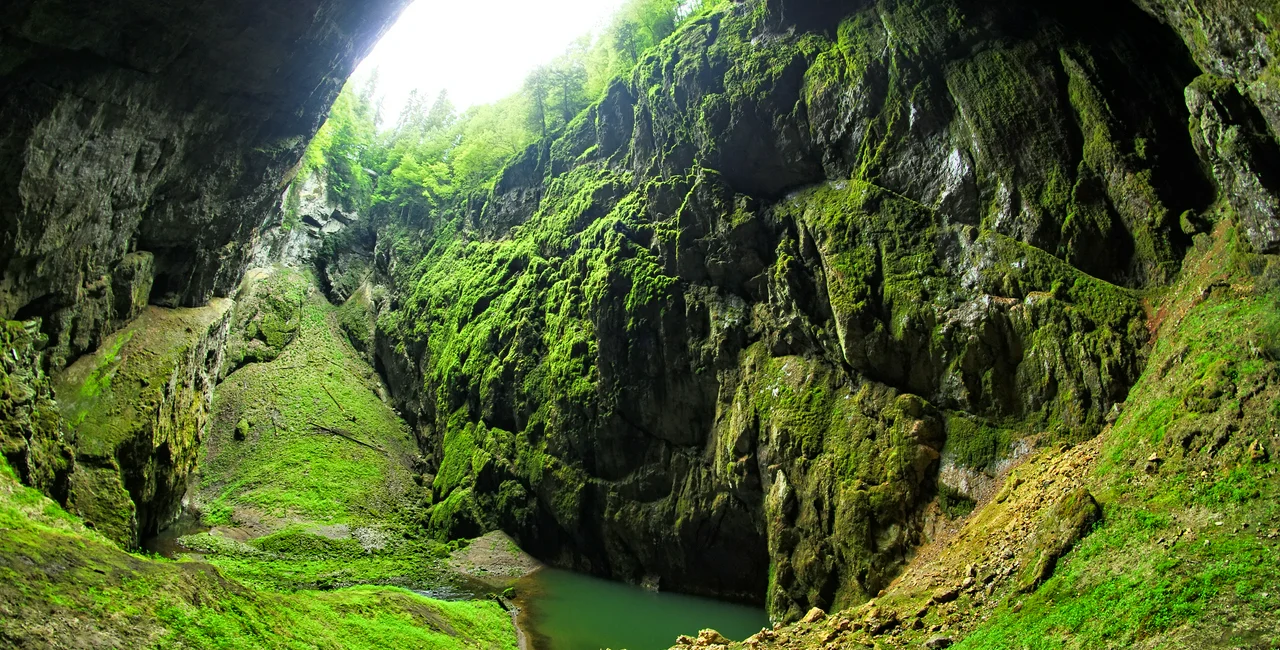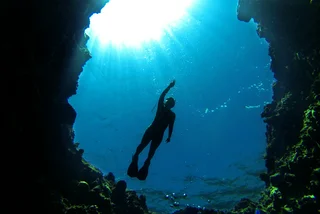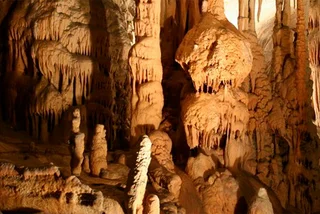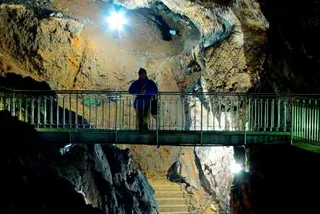As lockdown restrictions are lifted and we begin to emerge blinking into the light, many of our thoughts have turned to the possibility of traveling and exploring the world once more. This year has been designated the International Year of Caves and Karst; the Cave Administration of the Czech Republic recently announced the reopening of many caves across the Czech Republic, making it the perfect time to explore the country's impressive cave system.
The Cave Administration of the Czech Republic manages over a dozen caves throughout the country. All are open to the public and offer a variety of exciting visitor experiences: you can admire gorgeous stalactites and stalagmites in domed caverns, puzzle over the origins of unique rock formations, see ancient bones discarded by cavemen, take shelter from nuclear Armageddon or gently glide on a subterranean river – all in another world, easily accessible, but hidden under your feet.
Koněprusy caves – explore the caves on a flashlight tour
The Koněprusy cave system is located in the Bohemia Karst Nature Reserve in the Central Bohemian Region, just 7 kilometres from the town of Beroun. The caves were discovered in 1950 and have been publicly accessible since 1959, although it's believed that during the upper level of the cave was once used as a workshop by medieval currency forgers. The caves extend for more than two kilometres underground, with an average depth of 70 metres.
The public part of the cave system is 620m long and is accessible by guided tour only. The tour lasts about an hour and is only available in Czech, although foreign language information sheets are available. If you can time your visit for the last Monday of each month, then flashlight tours are available – all of the ambient lighting is switched off, and you have the chance to navigate the caves by the flashlight alone.
Mladečské caves – the home of real cavemen
The Mladečské caves under the Třesín hill were known to prehistoric people but were later forgotten – until their rediscovery in 1826 when a quarry was opened nearby. Archaeological research has revealed the skeletons of people and animals from the Early Stone Age, as well as multiple objects that show evidence of their activity, including stone instruments and fireplaces. The remains are believed to date from the period 35,000 - 26,000 BCE.
The caves extend to 1,250 metres of corridors, of which 380 metres is open to the public. Access to the caves by guided tour only (40 minutes), and there is a small interpretative centre on site, giving information about our prehistoric ancestors. There is an imaginative reconstruction of a group of cavemen performing a ritual in the cave itself, designed to delight and terrify children in equal measure.
Zbrašov aragonite caves – thermal activity keeps them toasty
The caves are located near the spa town of Teplice nad Bečvou. This cave system was created by a combination of the action of surface water and warm mineral water, issuing from spring from great depths in the earth. The warm springwater means that these are the warmest caves in the Czech Republic, maintaining a constant temperature of 14c. The cave system was discovered in 1912, when two quarry workers discovered warm air coming out of a crack in the rock. The thermal activity means caves contain large amounts of aragonite, which manifests as white, needle-like structures, while the bottom levels of the caves contain “gas lakes” – chambers that are permanently filled with carbon dioxide.
The caves are close to the Hranice Abyss, which is now recognised as the deepest underwater abyss in the world. The visible section of the abyss plummets 69.5 metres before it reaches water level and the bottom of the abyss has not yet been reached, but the latest measurement shows it to be at last 473.5m deep.
Punka Caves - A wicked stepmother and an underground river ride
The Punkva cave system is the highlight of a trip to the Moravian Karst and should not be missed. Beginning at the modern visitor centre, the tour leads you underground through several large caves, before emerging blinking into daylight through a tunnel to the base of the awesome Macocha Abyss.
According to local folklore, the Macocha Abyss is named for an evil stepmother (macecha) who married a widower in a nearby village. She nurtured the widower’s son until she had a boy of her own, when realizing that her own son would not inherit anything, she lured him to the gorge and pushed him in it. Surprisingly, the boy survived and he was later rescued by some villagers, who in turn threw her into the abyss as punishment for her cruelty.
The tour is divided into a dry part and wet part. After taking in the stunning view of the abyss, the group pile into small electric boats, which navigate a course through the flooded part of the cave system, expertedly steered by boatmen who point out formations and crack jokes along the way.
Výpustek cave - Wartime weapons factory and nuclear fallout shelter
The Výpustek cave is unique, not so much for its natural features, but more so for its man made interventions. It is a huge tunnel-like, Y-shaped passage, once believed to be the largest cave in Moravia. As the cave was long and broad and was easily accessed by road, it was readily exploited by people, with uses ranging from a source of fertiliser (bat guano and phosphate clay) to an underground weapons factory – the Germans installed concrete floors and electricity during the Second World War, allowing them to assemble airplanes safely underground.
Between the years of 1961-1968, the Czechoslovak Army installed a fallout shelter and a secret command post in the cave. Visitors have the chance to see the sleeping quarters, the logistics hall, the command post and workroom, and examine the survival equipment. With the thawing of the Cold War, the bunker was decommissioned in the 1990s, although the site remained highly classified until 2001.
For up-to-date information about opening times, to buy tickets, as well as detailed information about the geological and hydrological features of all the caves listed above, check out the Cave Administration of the Czech Republic’s excellent website. Be sure also to confirm opening times and Covid measures before planning your trip.












 Reading time: 5 minutes
Reading time: 5 minutes 



















